Vinegar and baking soda are both readily available in every kitchen. Vinegar of all types is a staple in every home as it adds a delicious acidic flavor to your dishes. And whether you bake or not, chances are you have a box of baking soda in your pantry that you bought and forgot about. Now is the time to bust that neglected baking soda, mix it with vinegar and go on a cleaning spree around the house.
You can use a vinegar and baking soda mix to clean and freshen drains and sinks, resolve the problem of hard water stains, remove carpet stains, kill mildew in moldy clothes, whiten grout, and remove gunk in pots and pans. It’s also effective against pet stains and clogged drains and cleans showerheads and toilets effortlessly.
While some people treat vinegar and baking soda mixes as the silver bullet for all types of gunk, dirt, and stains in the house, there are caveats you need to know about to get the most out of this affordable and easy-to-make mix. Read more to find out how to use vinegar and baking soda for cleaning.
How does the Vinegar and Baking Soda Mix Work?
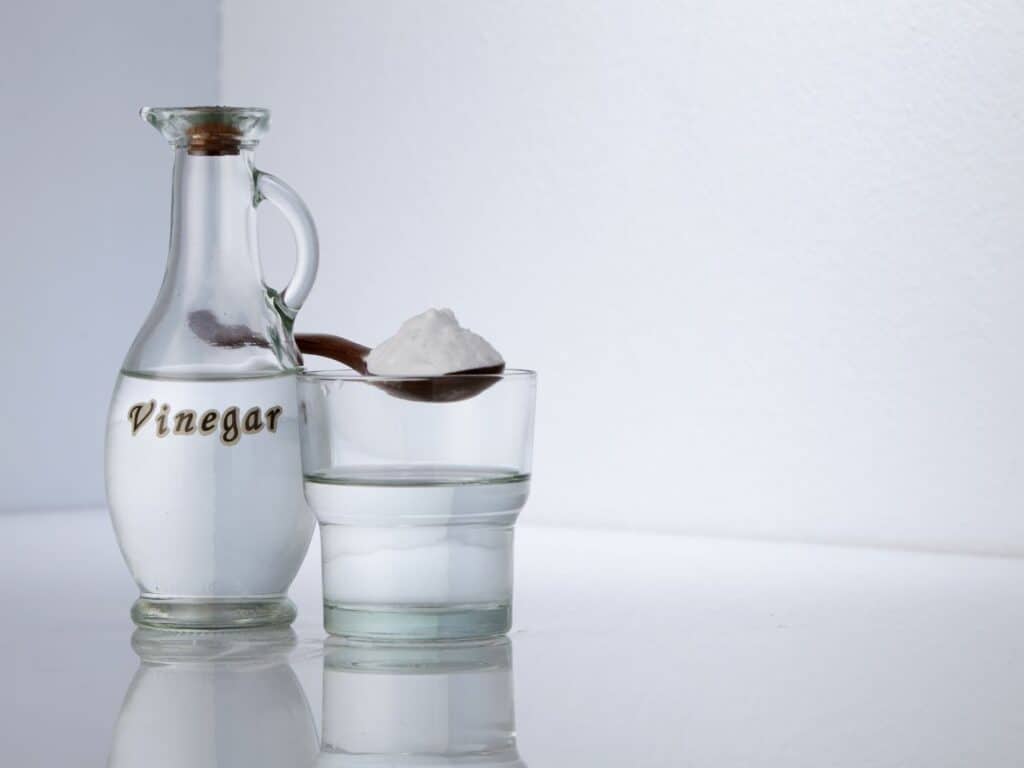
Both baking soda and vinegar offer something to the mix, and they each target a certain aspect of the stain to effectively pulverize it with little effort on your part. Let’s start with baking soda. The gritty material is effective against organic stains such as grease, eggs, and dirt. It breaks down the organic material and makes it easier to dislodge and dissolve the stains before you wash them thoroughly with water.
Vinegar is an acid whose power lies in its ability to dissolve stubborn stains. But it also works its magic on the minerals in hard water in the tap, making it easier to get rid of stains. Mixing the abrasive baking soda with powerful vinegar is a potent formula that works against many stains in your house.
You will know that the two compounds are mixed when you notice bubbly fizz rising from the mixture. Chemically speaking, since baking soda, or bicarbonate soda as it’s often known, is a base, it needs a proton. When mixed with the acidic vinegar, the loose proton in the vinegar moves to the baking soda to create that chemical reaction.
The cleaning power of mixing vinegar with baking soda is during that chemical process. As long as you see bubbles of fizz, you can clean any stain. Once the fizzing phase subsides and the last bubble of carbon dioxide has left, what remains is nothing but water and acetate, which is not good for cleaning even a small stain.
What to Clean with Vinegar and Baking Soda
Most often, the go-to solution to fight stains around the house is to buy a stain remover. Apart from the cost, there are other considerations why you shouldn’t use harsh chemicals on your plates, utensils, and pots. You will end up consuming trace amounts of these chemicals. Mixing vinegar with baking soda is both a cost-effective and eco-friendly solution for your stains.
Sinks and Drains
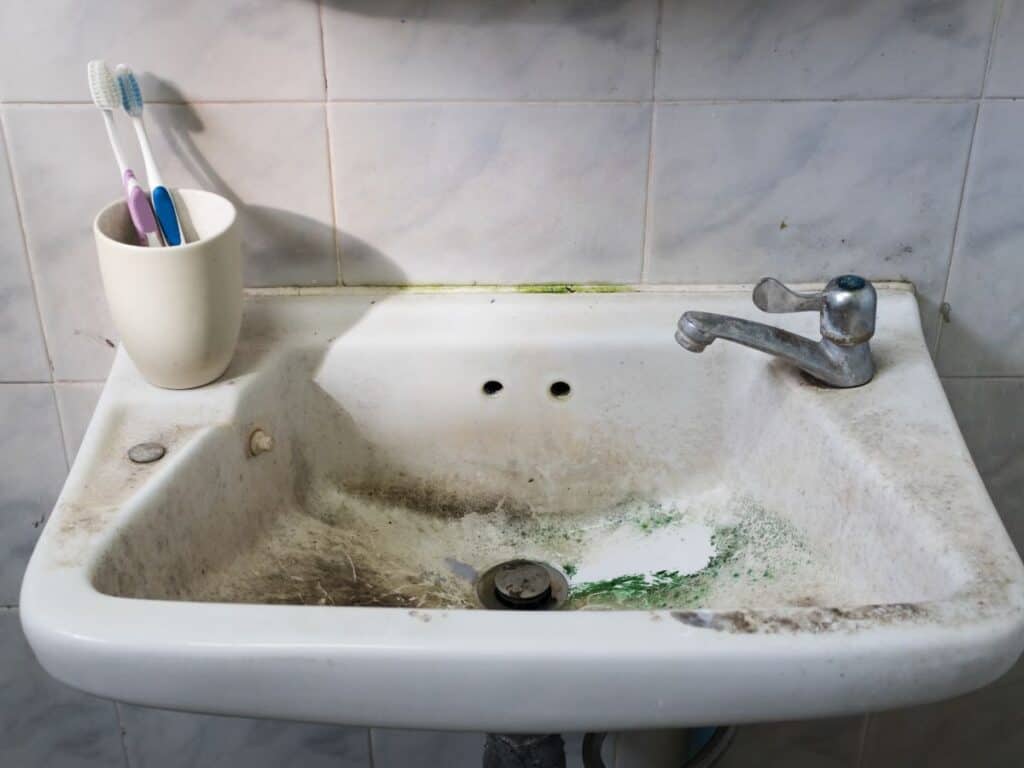
Sinks and drains in the kitchen and bathroom are exposed to steam, grease, and dirt. When mixed, they form gunk which sticks to the surface and becomes fertile ground for pathogens and clogs the pipes. Gunk is notoriously difficult to remove, but it doesn’t stand a chance against the chemical reaction of vinegar and baking soda.
Pour half a cup of baking soda into the drain, then follow with one cup of vinegar. Give the mixture time for the chemical reaction to break down the gunk. When the bubbling stops, pour hot water into the drain to flush down the gunk and other debris clogging it. Keep flushing the drain with hot water for the next 5 minutes.
To clean the sink, plug the drain and sprinkle baking soda on the bottom and sides of the sink. Pour vinegar over the baking soda at the same 2:1 ratio in favor of vinegar. Scrub the sink while the mixture is fizzing, then rinse with hot water.
Hard Water Stains
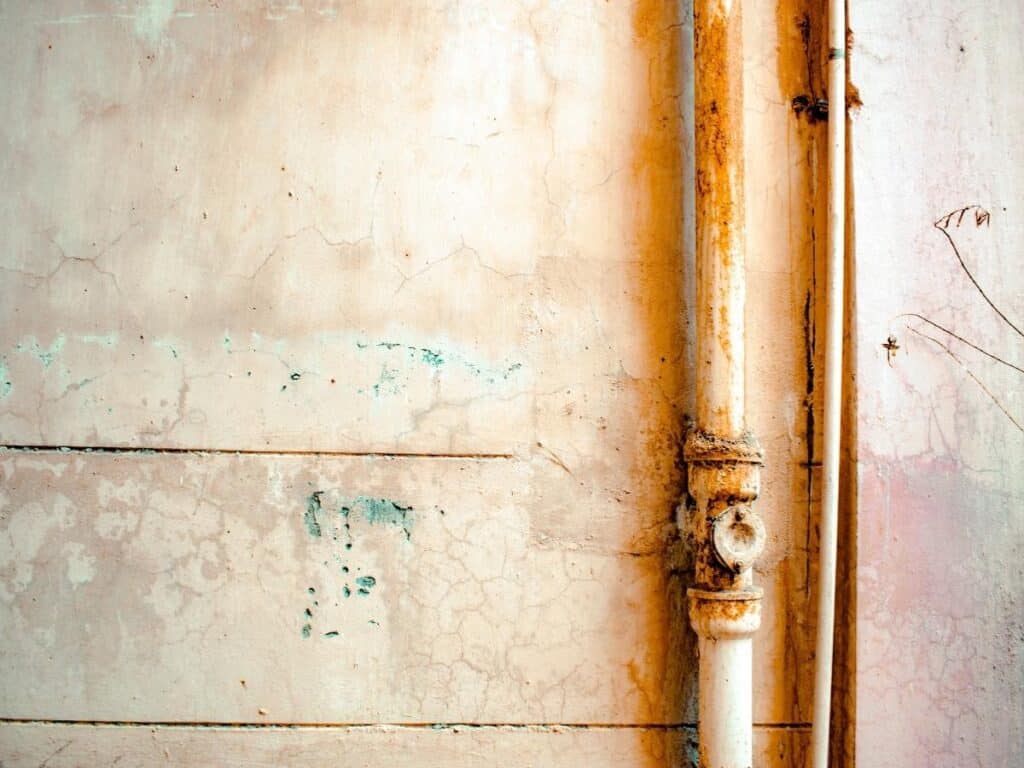
Hard water is tap water packed with chemicals and minerals that leave stains on the sink surface. To treat these tough stains, place a paper towel over the affected area and drench it with vinegar. Let the soaked towel sit there for a couple of hours for the vinegar to take effect. Then remove the paper and sprinkle baking soda. Scrub the stains off to regain your shiny sink once again.
I also wrote a guide on the best detergent for hard water and a really comprehensive guide on the best washing machines for hard water that may interest you.
Carpet Stains
Carpet stains can be frustrating to remove. The pile of the carpet absorbs the stains fast. You need a solution that infiltrates the underlying yarn and breaks down the stains. Make a paste of baking soda and water, then work it through the stain with your fingers. Sprinkle vinegar on the stain and let the two compounds interact and destroy the stain. Leave it all night and vacuum the stain in the morning.
Moldy Laundry
When your towels stay damp for too long in the hamper, chances are they will get moldy. Mold spores can survive the washing and drying cycles and spread to other garments in the same load as well. You’ll need a half cup of baking soda added to the detergent and a full cup of vinegar added during the rinse cycle to get rid of all the mildew and the funky smell they give to the clothes.
Grout
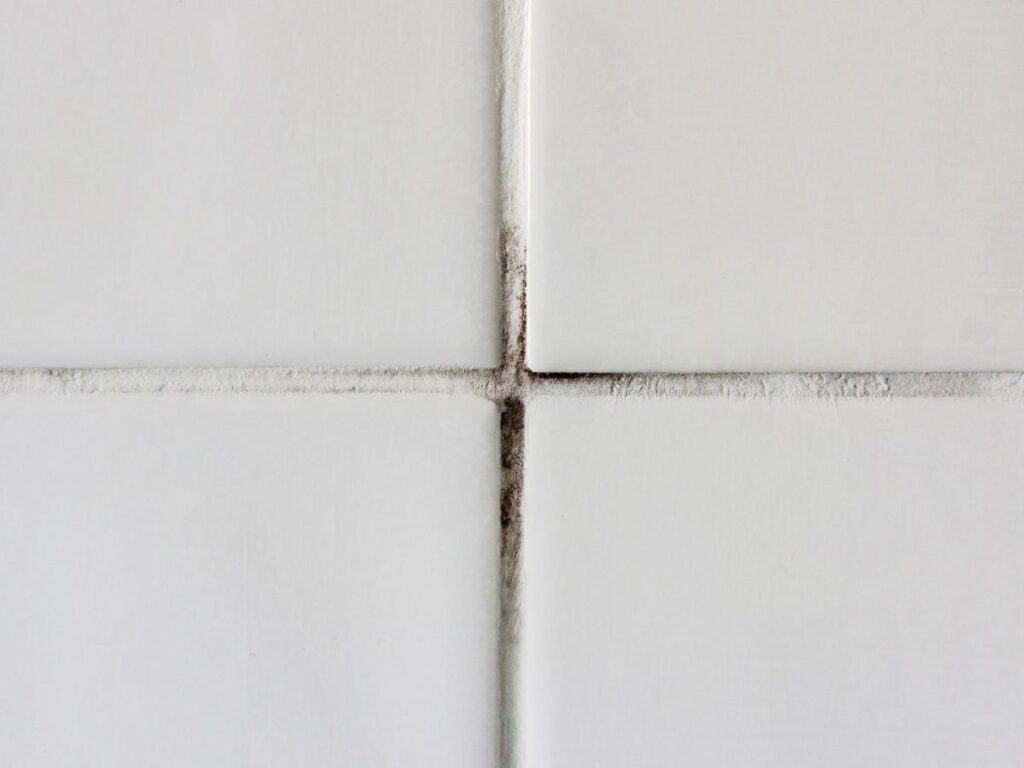
Grout is a common sight on tiled floors everywhere, from the kitchen to the bathroom and entryways. It’s caused by spills combined with dirt and germs. The light-colored grout is rife with pathogens and mold and can be a health hazard on top of being an ugly sight. Make a paste with baking soda and water and apply it to the grout. Sprinkle vinegar on top. Wait for a few minutes, then scrub the tiles.
Gunk
Pots and pans get covered with gunk that even the most expensive dish soaps fail to remove. If you burn food in the pot, that doesn’t mean you have to live with that gunk. Get the gunk damp by covering it with water and then set it aside for a while. Empty the water and sprinkle baking soda on the gunk. Add a dash of vinegar and when the fizz bubbles up, scrub with a nylon scrub.
Other Uses for the Vinegar and Baking Soda Mix
Once you have discovered the power of vinegar and baking soda in cleaning, there’s no turning back. You’ll be walking around the house armed with those two and ready to assault those pesky stains that give you a hard time. As you can imagine, you can use that magical cleaning couple on other parts of the house, both indoors and outdoors.
Shower Head
The shower head gets more than its fair share of steam, hard water minerals, and dirt. This turns into grime that sticks to the surface and gives the shower head a dull and dirty look. Unscrew the shower head and place it in a ziplock bag. Fill the bag with vinegar and let it sit all night. In the morning, take out the shower head and sprinkle it with baking soda. Scrub with a toothbrush to get all the gunk off.
Toilet Bowl
Start with vinegar as a base that covers the inside and outside of the toilet bowl. Then sprinkle baking soda liberally to create a thick layer of fizz. Scrub the toilet bowl with a thick brush once the fizz has gone. Rinse and examine the bowl for any other stains. Repeat as needed until you have removed all the stains.
Pet Stains
If your pets relieve themselves on the carpet, don’t panic. That’s another situation where vinegar and baking soda become handy and get you out of the messy problem easily. Spritz the affected area with vinegar to dampen it. Then cover with a generous amount of baking soda. You’d want the dry baking soda to reach the deep bottom of the carpet. When the mixture has dried up, vacuum the carpet.
Laundry Stains
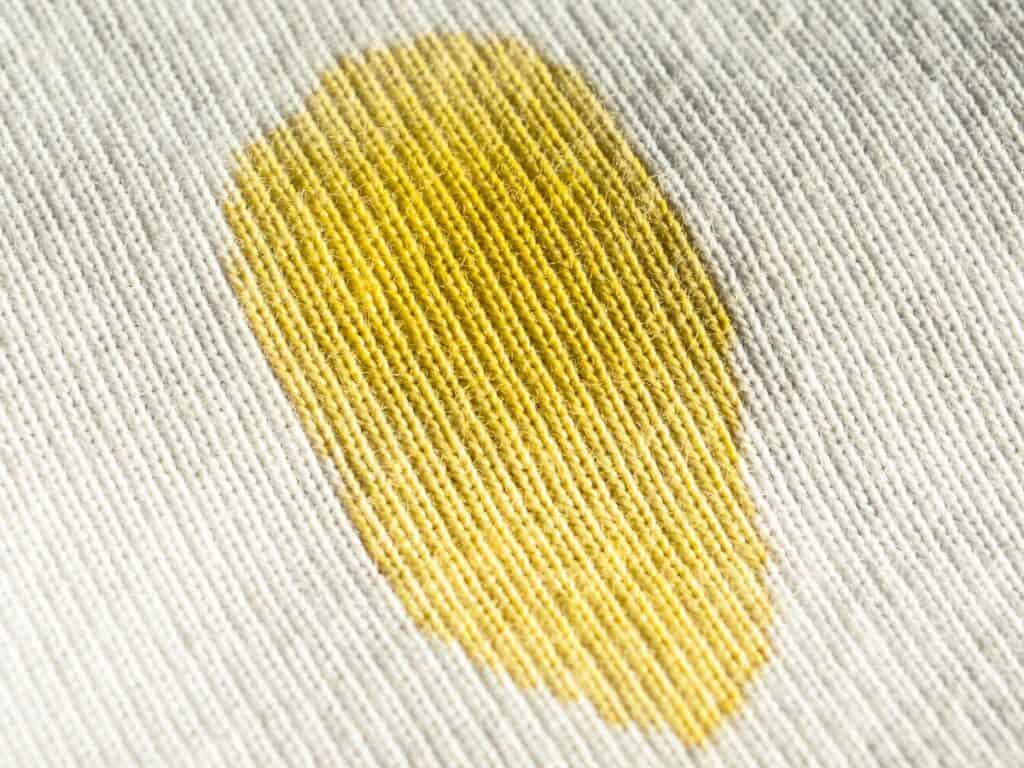
Some stains like wine and food stains on your clothes need special pre-wash treatment. But even after scrubbing the stains off, they’re not totally gone. Add vinegar and baking soda to the washer to get rid of the faded stains. But you don’t have to mix them. Instead, sprinkle the baking soda over the clothes before you start the washing cycle. Then add the vinegar before the rinse cycle.
More on cleaning laundry stains here.
Silverware Tarnish
It’s no secret that silverware tends to lose its glossy look the more you use it. Here again, you can blame hard water in the tap for the problem. You only need baking soda to get this shiny look back. Mix one cup of baking soda with three cups of water and scrub your silverware with a dish sponge. If they still look dull, soak them in the solution overnight and scrub and rinse them the next day.
Fridge Odors
If cleaning your fridge doesn’t remove those funky odors that greet you every time you open its door, vinegar can help. Mix vinegar with water in equal portions. Spray the fridge with the mixture, then let it sit for a few minutes. Wipe the inside of the fridge with a clean cloth to absorb the excess moisture. Use the same liquid to get rid of the mold and gunk in the ice maker.
Is it Safe to Mix Vinegar and Baking Soda?
Both vinegar and baking soda are safe to consume and have around the house without worrying about any health hazards. When mixing the two compounds, the chemical interaction results in carbon dioxide. Neither the chemical reaction nor the resulting gasses are dangerous. Still, you should ensure that the room is well-ventilated when mixing those two ingredients just to be on the safe side.
Once the chemical interaction stops and the last bubble bursts, the remaining water is perfectly harmless. The acidic vinegar neutralizes the alkaline baking soda.
When Not to Use Vinegar and Baking Soda for Cleaning
People have always been divided over mixing vinegar with baking soda. The mixture worked for some but did nothing to the stains at other times. Some people believe that since vinegar is acidic with 3 pH while baking soda is alkaline with 9 pH, mixing them will neutralize their potency. But as we have seen, it’s the chemical reaction when the proton in the vinegar binds with the baking soda base that creates the powerful cleaning formula.
So why do some people get disappointing results with it? The answer has to do with the small window of chemical reaction that mixing those two compounds has. You need to apply the mixture during the bubbling phase. Better yet, you should apply the vinegar to the stain first, then sprinkle the baking soda over it, as explained above.
That said, there are situations where you shouldn’t use either baking soda or vinegar. If you’re dealing with a carpet or delicate clothes that might interact with the vinegar or lose their color due to the chemical interaction, then you should find another solution for the stains. Always test the mixture on a small part of the carpet or fabric first. If you’re happy with the result, continue using it on the stain.
Conclusion
Vinegar and baking soda are affordable and easily available products in your household. Using those two together, you can tackle the toughest stains in your kitchen, bathroom, floor, and anywhere dirt and stains have accumulated.
Don’t mix the baking soda with vinegar before applying them. They have a small window of chemical interaction. You should apply either the vinegar or baking soda first, then apply the other one. For the best results, always use vinegar and baking soda at a ratio of 2:1 in favor of the vinegar. Wash and rinse with cold water after each application.
Next, you can check out how to mix vinegar and detergent.

I’m an expert wardrobe organizer and a bit of a clean freak. I created this website and its YouTube channel to share practical guides about laundry and organizing. My teachings have been featured in multiple large news publications, and I’ve self-published two wardrobe organizing books and an entire course on the subject.
